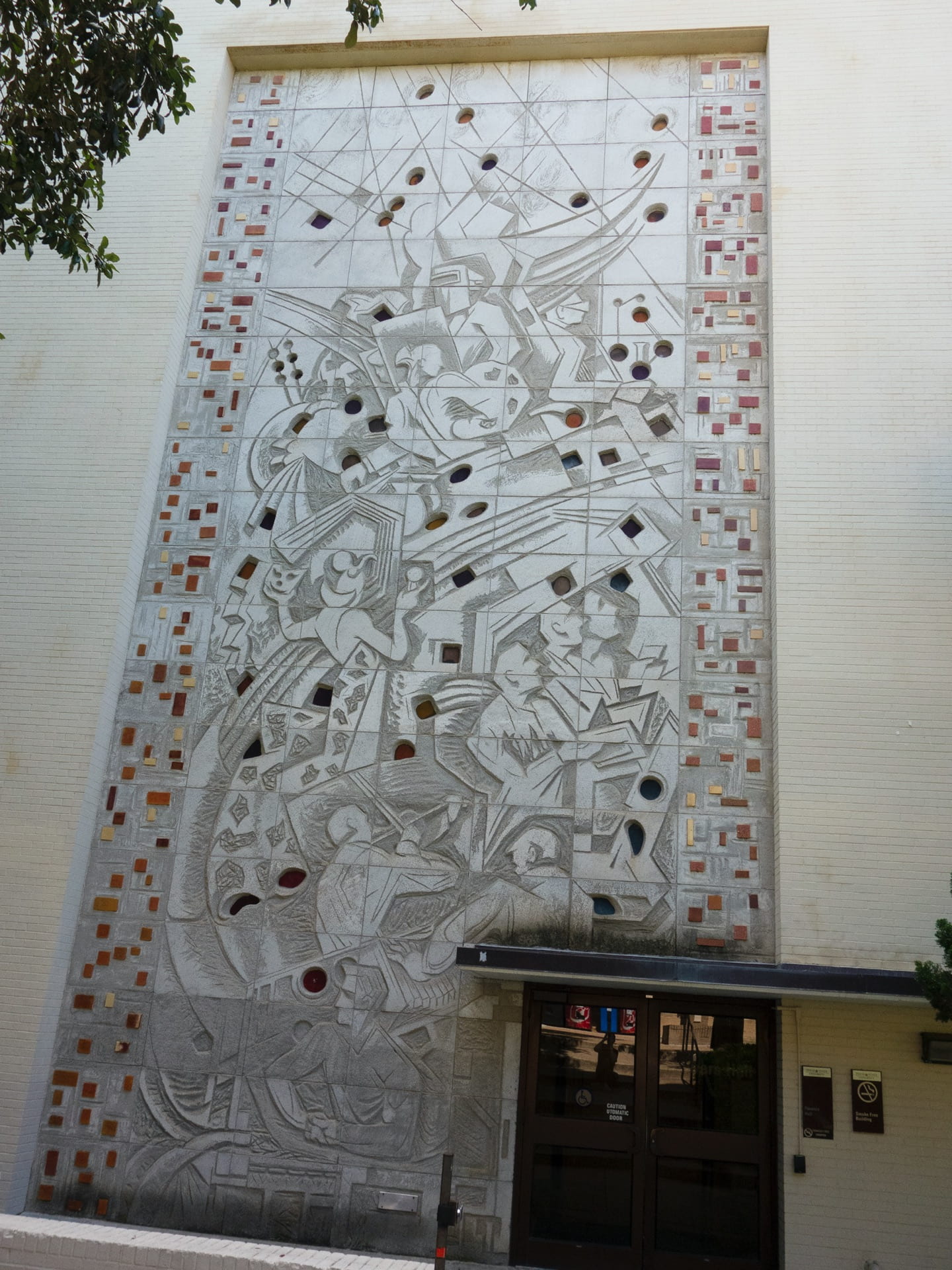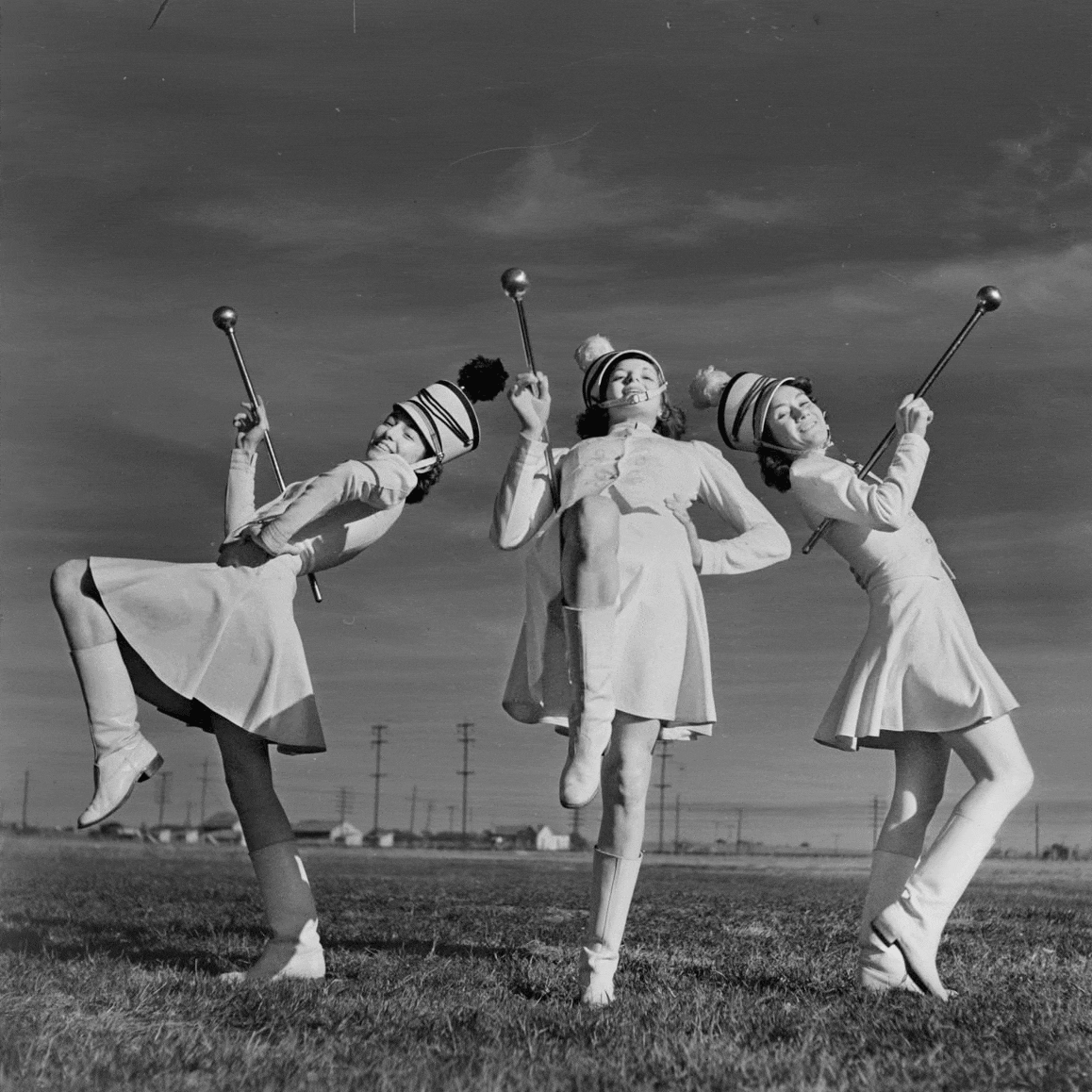In mid-March, we received a request to provide images for an exhibition on the work of the Texas artist and sculptor, Buck Winn, that exists on Texas State University’s campus. One of his works on the façade of Flowers Hall is a bas-relief sculpture with stained glass inset throughout. Originally the stained glass allowed light to shine into the stairwell on the interior of the building, however over the years the interior was altered, and the stained glass was filled in. Laura Kennedy, a University Archivist, wanted to create a coloring page to allow viewers of the exhibition to download the image and color in the stained-glass portions with their own interpretation. Getting a good image of the full artwork was challenging, since the façade of the building is tall and narrow, with trees and a staircase in front of it, and there’s no way to take a photograph of the building straight on.
I began by capturing an image of the entire mural, with as minimal interference from surrounding elements. I also had to consider time of day, to avoid interference from dark shadows or harsh sunlight.


